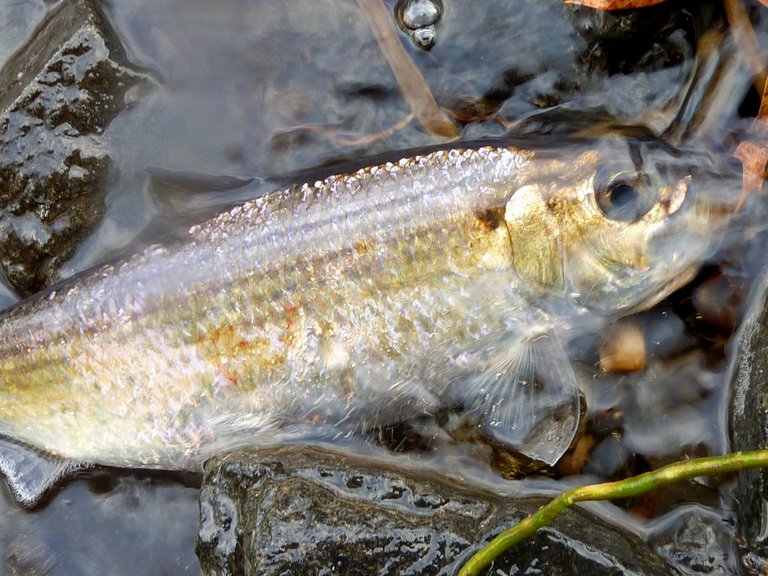The alewife fish breed, Alosa pseudoharengus, is a species of anadromous fish native to the northern Atlantic coast of North America, living most of its life in the sea but swimming upriver to spawn. Alewives are a type of herring and belong to the family Clupeidae.
The species was first reported from Lake Erie in 1931, Lake Huron in 1933, Lake Michigan in 1949, and Lake Superior in 1954. The spread of Alewives in the upper Great Lakes is thought to be enabled by warmer weather in the 1950’s
In some populations of alewife, the fish live entirely in fresh water. The alewife is most famous for its invasion of the Great Lakes by using the Welland Canal to bypass Niagara Falls. In the lakes, their population surged, peaking between the 1950s and 1980s to detriment of many native species of fish. To control them biologically, Pacific salmon were introduced.
In the Great Lakes, alewife became abundant mostly in Lake Huron and Lake Michigan. They reached their peak abundance from the 1950s through the 1980s. In order to survive, alewife required a food chain with no top predator. As a result of the lack of predators, they grew in number unchecked.
In the spring, adult alewifes move upstream to spawn. Fisherman catch them using dip nets in shallow areas of the river. They are used as bait for lobster traps during Maine’s spring lobster fishery.

The fish has seen a decline in its population throughout much of its range, due to several threats. One major threat is the construction of dams and other impediments to migration. Dams have prevented alewives from migrating upriver to spawn, so their populations have declined. Other threats include habitat degradation, fishing, and an increase in predation by recovering striped bass populations.
Table of Contents
Alewife Fish Physical Appearance
- The Alewife Fish, Alosa pseudoharengus, is a small herring that is comparable in size to the American shad.
- Alewives are often mistaken for river herring because they have similar characteristics.
- The head of an alewife is broader than it is long, and its eyes are large with adipose eyelids (Wormuth & Wisner) fish with a dark upper side, bluish to greenish, and light sides with horizontal darker stripes. A dull black spot is located behind the operculum. Scales are easily rubbed off and form scutes on the mid.

Alewife have inconspicuous jaw teeth and no tongue teeth. The caudal fin is forked, with no adipose fin. They are visually similar to Blueback Herring, but Alewife has a peritoneal lining that is white, larger eyes, and a greater body depth than Blueback Herring. The freshwater gar grows up to 38 cm, but inland populations are usually less than 25 cm.
Alewife Fish Habitat
Alewife Fish are anadromous, living in salt and brackish marine areas as adults and returning to freshwater to spawn. Alewife can spend their entire life in freshwater, prefer marine environments where they can feed on smaller organisms, but they are able to survive in freshwater. They spawn in the spring, and then return to the sea.

Alewife Fish Feeding
The diet of the Alewife Fish is diverse, as it feeds on zooplankton. It also selects for the largest zooplankton in invaded water bodies and subsequently has altered the species composition of zooplankton in the Great Lakes where Alewife are abundant.
Economic Importance of the Alewife Fish
As a result of the alewife’s migration patterns, it was able to thrive in the upper lakes between 1931 and 1954. It faced little competition or predation during this time and became the most abundant species. Alewives are not of commercial value, however; their presence has caused costly sanitary operations when, periodically, millions of them die and wash up on shorelines. It is a good fish.
RECOMMENDED ARTICLES
- Bream Fish Species – 4 Major Comprehensive Body Characteristics, Distribution And Breeding
- Bramble Shark Fish Species: 5 Comprehensive Body Characteristics, Habitat And Spawning
- Small Scale Catfish Farming Business Plan And The Ideal
- Small Scale Fish Farming Business Plan And The Ideal
If you like, please share it. Sharing is usually caring.




